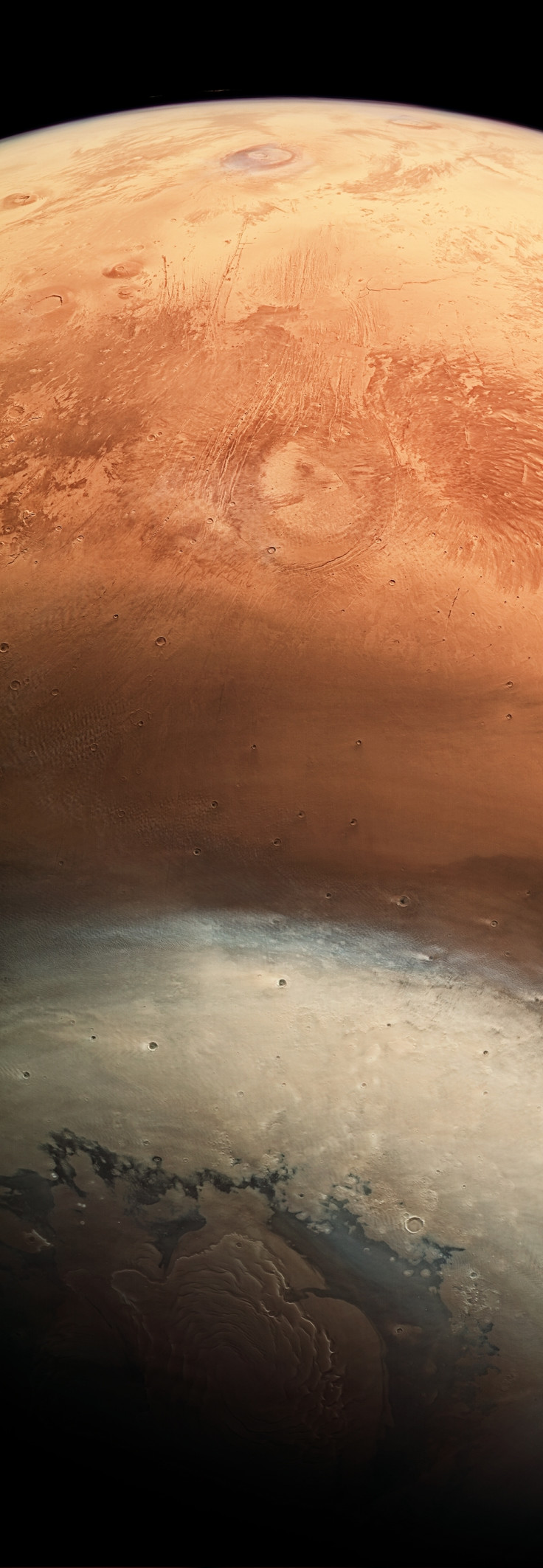ESA captures Mars upside down in this stunning new photo
The agency captured the image as its Mars Express spacecraft moved from North to South Pole.
In a stunning new image, the European Space Agency (ESA) has captured the scenic beauty of Mars but with a bit of a tweak – the North Pole is down, while the South is up.
Usually, planets are captured in such a way that the North Pole appears at the top, while the South Pole comes at the bottom. However, the fact is "up" and "down" sides can seem subjective for objects in space.
What may look "down" for somebody may seem 'up' for another viewer looking from a different place and angle in space.
This is exactly what ESA has shown with a new stunning image of the Martian surface. The agency, using its Mars Express spacecraft, turned the planet upside down and captured a breathtaking photo showing its icy northern polar cap at the bottom and the red landscape of the equator on top.
The rare wide-angle view was captured when the spacecraft flew from North to South in the month of June. Specifically, Mars Express had to multi-task to get this image. The craft shifted its high-resolution camera to the horizon while panning it over the surface to cover as much area as possible.
"The northern polar cap was composed of water ice and dust at the time of imaging, at the beginning of spring," ESA noted while highlighting details of the bottom-half of the image. "The carbon dioxide ice present in winter had already evaporated from the solid form to a gas."
The top-half, on the other side, showcases some of the largest volcanoes located in the Tharsis Montes region -- an area larger than Europe -- of the Red Planet.
The view misses Olympus Mons, the largest among all known volcanoes, but captures Alba Mons, which has a diameter of more than 1,000km as well as others going up to 22km in height. In all, the Tharsis region rises some 5km above the planet's average elevation.






















